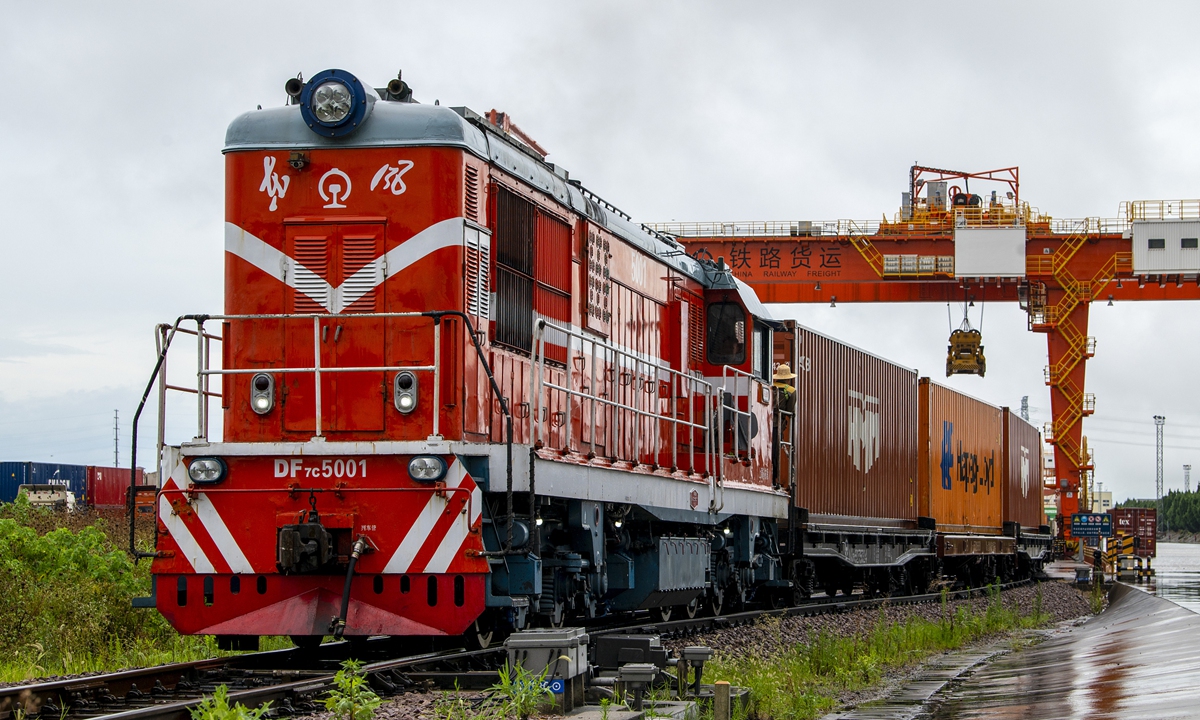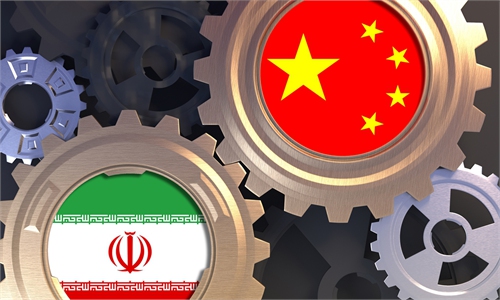
Photo:VCG
In the first seven months of this year, China's trade with countries along the China-proposed Belt and Road Initiative (BRI) reached 8.06 trillion yuan ($1.12 trillion), up 7.4 percent year-on-year, data from the General Administration of Customs (GAC) showed on Tuesday.
As the BRI embraces its 10th anniversary this year, experts said that it has brought tangible benefits to countries along the route from infrastructure construction to enhanced cooperation in new energy and green development.
Trade with BRI countries grew faster than overall trade, which rose 0.4 percent to 23.55 trillion yuan.
"As the circle of friends of the BRI continues to expand, trade between China and countries along the route will also expand, especially in the areas of the digital economy and new infrastructure," Liang Haiming, dean of Hainan University's Belt and Road Research Institute, told the Global Times on Tuesday.
China-Europe freight trains, which have become a pillar of BRI trade, have also grown rapidly this year.
As of July 29, the trains had made 10,000 trips, 22 days earlier than last year, carrying more than 1.08 million 20-foot equivalent unit (TEU) containers of goods, up 27 percent, data from China State Railway Group showed.
A cross-border transport agent surnamed Meng in Erenhot, North China's Inner Mongolia Autonomous Region, told the Global Times on Tuesday that more categories of goods were carried in the first half.
"New types of cargo such as linseed and barley were added to the previous import category comprised of wood and paper pulp. Autos and electronic appliances took the majority of export cargo," he said.
Tommy Tan, president of the Shanghai EPU Supply Chain Management Co, an agent for China-EU freight train service, said the growth in his company's China-Europe rail freight business this year showed minimal year-on-year changes. But among the emerging and thriving sectors, new-energy vehicles stood out.
"This segment of our business has experienced substantial growth. We have a positive outlook on the development prospects of the China-Europe rail freight business," Tan said.
"The freight train service remains an essential multimodal transportation product needed for both trade and supply chains," Tan added.
The New International Land-Sea Trade Corridor is also one of the key projects under the BRI. Launched in 2017, it's a trade and logistics passage that was jointly built by provincial-level regions in western China and members of ASEAN.
In the first half of this year, the number of cross-border rail-sea intermodal trains reached 4,510, up 9 percent year-on-year. International railroad trains totaled 4,091, an increase of 18.51 percent, according to the Xinhua News Agency.
Southeast Asian specialties such as Lao sticky rice, Thai durian, Vietnamese balsa fish and Cambodian bananas also enter the Chinese market more quickly along the corridor.
China has continuously shared its development dividends with other countries, especially via the BRI, experts noted.
Liang said that many countries along the BRI have an uneven distribution of power supplies or even long-term power shortages, which affects their economic development and foreign investment. By strengthening cooperation with China in the field of new energy, these countries have been able to promote their economic development by using China's technology, knowledge, equipment and investment.
As of the end of 2022, cumulative investment in overseas economic and trade cooperation zones built by Chinese enterprises in countries along the route amounted to $57.13 billion, creating 421,000 local jobs.
According to a report by the World Bank, benefiting from the BRI, the GDP share of emerging and developing economies increased 3.6 percentage points from 2012 to 2021. The World Bank estimates that by 2030, the BRI will generate annual benefits of $1.6 trillion for the world, accounting for 1.3 percent of global GDP.
A total of 7.6 million people will be lifted out of absolute poverty in 2015-2030, and 32 million people will be lifted out of moderate poverty as a result.


